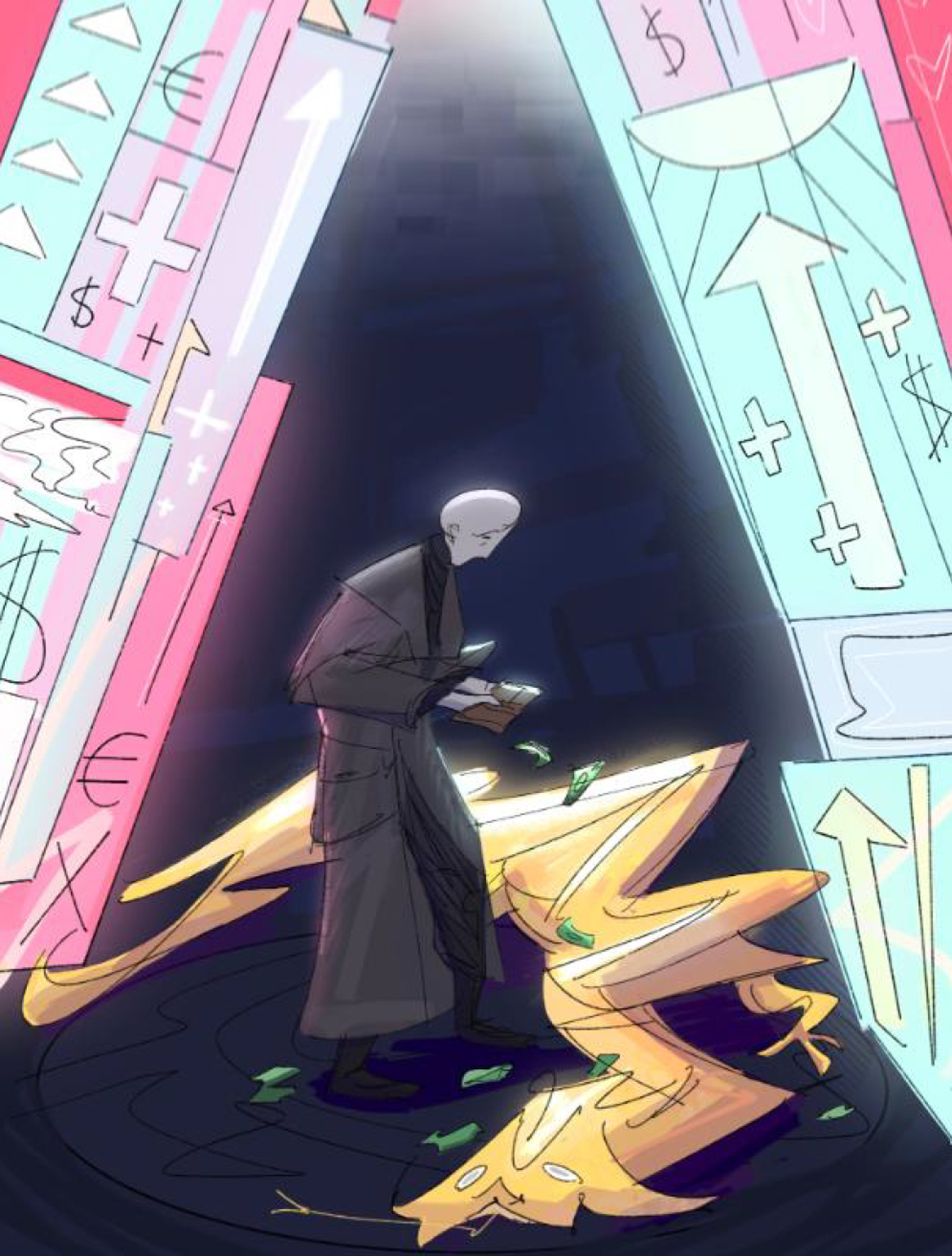AP Art of the Week
Spotlight on Artist Alec Barker
Welcome to The Elective’s digital art museum, dedicated to the incredible work of AP Arts students. This week we feature a digital illustration made by Alec Barker from Pacific Collegiate School in Santa Cruz, California.
Welcome to The Elective’s digital art museum, dedicated to the incredible work of AP Arts students. Each week we highlight a work or series created in one of the AP Arts concentrations—AP 2-D Art and Design, 3-D Art and Design, and AP Drawing (the AP Program also offers Art History and Music Theory)—as well as a statement from the artist (and, occasionally, their teacher).
From the first cave paintings to contemporary breakthroughs in virtually reality, art, in all its forms, has been a crucial way for people to process, make sense of, comment on, and grapple with the world around them. After more than a year of life in a pandemic, AP Art students have risen to the challenge of processing and making sense of the challenges—and opportunities—that have come from this perilous time. The work they submitted in their final portfolios is explicitly of the moment. It’s often challenging and provocative, but always insightful, inspiring, and expansive.
This week we feature a digital illustration made by Alec Barker from Pacific Collegiate School in Santa Cruz, California.

Here’s Alec’s statement on the work:
“Where is the line drawn between fiction and reality? How is augmented reality used to close this gap? I found the difference becomes less concrete with time. This was through exploring a series of sequential drawings juxtaposed with depictions of fictional worlds. Through this process I wanted to display parallelism and synchronization between them using similar movement and composition. Early pieces used themes of transportation, but as the investigation progressed the story-driven pieces became further from reality, reaching the point where they were indistinguishable from the fictional worlds.
“For this image, which I made on an iPad Pro, I wanted to show the interpretation of how ancient architectural styles can carry over into the future. I sketched a layer of the most important shapes, added a second sketch for texture, then created a paint layer for color and lighting.
“For many of the pieces in my investigation, I sketched multiple compositions in advance and adjusted as they were completed. For pieces using more complex shapes, I made sketches for potential designs after the composition idea. While researching I discovered the ways virtual reality is designed and how fictional concepts are still rooted in existing concepts. Halfway through I decided to integrate storyline pieces as half the investigation. This was crucial in indicating a clear barrier between fiction and reality even within purely fictional work.”
And here are a few other works from Alec’s portfolio:

For this piece, which analyzed New York winter clothing, I made a digital sketch then added several layers of digital painting.

Here I painted flat colors to map out the drawing, applied thin lines, and then used digital airbrush for shadow.

For this work, I made individual segments to form triangular waves in the background, then added lighting to each segment.

The lines were done with digital pencil, blur was applied after sign colors for glow, then a screen layer was added for shine.

I created the line layer with digital ink, with a color layer below, then I applied a chromatic aberration effect.

I painted all dark colors first, then used a low-opacity brush for outside lighting and highlights.

This is an exploration of tones that exist in different genres. It's a composition sketch with sky color layers sorted by light level. I then applied lighting and dust effects.
Student statements are lightly edited for length and clarity.


